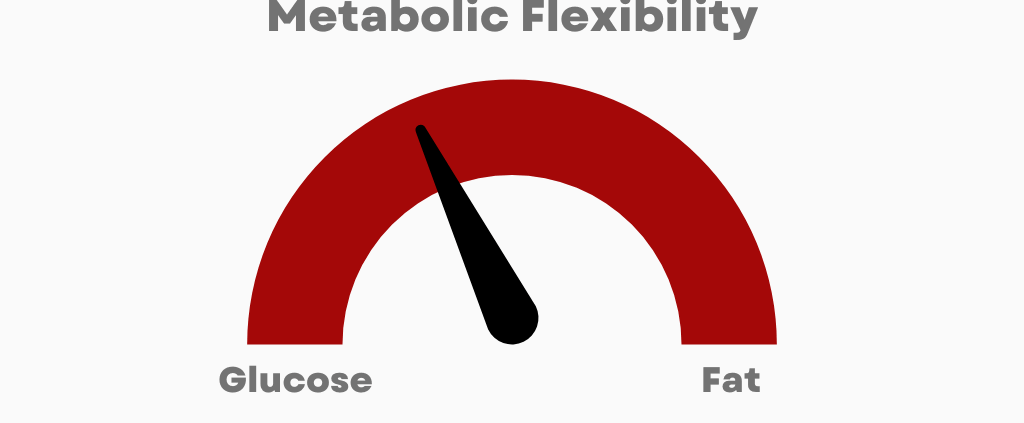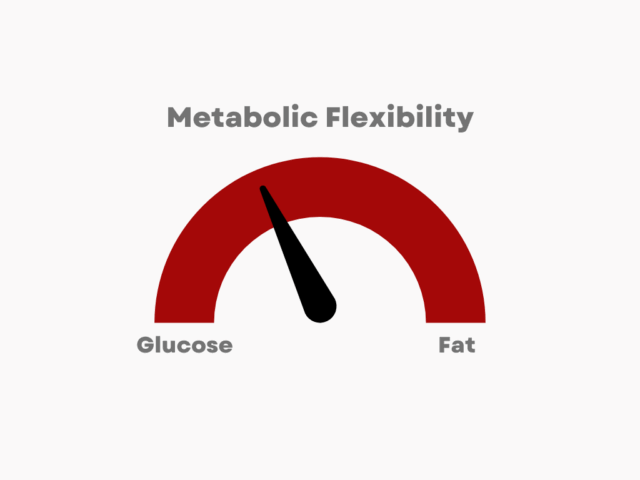If you feel like you are doing everything “right” but the scale will not budge, or you are constantly craving sugar and running out of energy, you are not alone. Many people assume fat loss is simply about eating less and moving more, but the reality is much more complex. The real reason many people struggle to burn fat is a hidden factor called metabolic flexibility.
In this post, we will cover what metabolic flexibility is, why it matters for fat loss, the common signs your body may not be flexible, and most importantly, what you can do to improve it.
What Is Metabolic Flexibility?
Metabolic flexibility is your body’s ability to switch smoothly between burning carbohydrates and burning fat for fuel, depending on what is available.
- When you eat a meal with carbohydrates, a flexible metabolism uses glucose efficiently for energy.
- When you go longer between meals or during sleep, a flexible metabolism shifts gears and burns stored fat.
If your body struggles to make this switch, you may be metabolically inflexible. That means you are stuck in one gear, often locked into burning carbs only. This leaves fat stores untouched and can create constant cravings and energy crashes.
Why Metabolic Flexibility Matters for Fat Loss
Burning fat is not just about eating less fat. It is about whether your metabolism can access stored body fat when it needs to.
When you are metabolically flexible:
- You have steady energy throughout the day.
- You can go several hours without snacking.
- Workouts feel easier because your body can tap into both carbs and fat for fuel.
- You can burn fat even when you are not exercising.
When you are metabolically inflexible:
- You feel tired after eating carbs.
- You crave sugar or snacks every few hours.
- You feel “hangry” if meals are delayed.
- Workouts feel harder and recovery is slower.
- Fat loss feels impossible no matter how little you eat.
Common Causes of Poor Metabolic Flexibility
So why do some people get stuck in carb-only mode? A few key factors are often involved.
1. Constant high-carb eating
When the diet is dominated by refined carbs and sugar, insulin is always elevated. High insulin levels make it harder for your body to unlock stored fat.
2. Low muscle mass
Muscles are a major site of fuel burning. If muscle mass is low, your body has fewer “engines” to burn both carbs and fat.
3. Chronic stress
Stress hormones like cortisol interfere with fuel switching. Stress also drains magnesium and B vitamins that are critical for energy production.
4. Poor sleep
Sleep loss makes your cells more insulin resistant, which means glucose is not used efficiently and fat burning is impaired.
5. Sedentary lifestyle
When you do not move enough, mitochondria (your cellular powerhouses) become sluggish. Fewer mitochondria mean less flexibility in fuel use.
6. Hormonal imbalances
Thyroid, estrogen, and insulin imbalances can all reduce the body’s ability to switch between fuels.
How to Tell if You Are Metabolically Inflexible
Here are some common signs and symptoms:
- You crash or feel drowsy after eating carbs.
- You get shaky, irritable, or lightheaded if you miss a meal.
- You constantly crave sugar or caffeine to get through the day.
- You struggle to lose fat even with calorie restriction.
- You feel exhausted during workouts or need sugar to push through.
- You wake up at night to pee (often linked to unstable blood sugar that spikes and crashes overnight).
If these sound familiar, you may not be burning fat effectively.
How to Improve Metabolic Flexibility
The good news is that metabolic flexibility can be trained. Just like building muscle or endurance, you can build your body’s ability to switch between fuels.
Here are practical steps you can take:
1. Prioritize Protein at Every Meal
Protein stabilizes blood sugar, supports muscle mass, and provides the amino acids needed for mitochondria to function. Aim for at least 25 to 30 grams per meal.
2. Build Muscle with Resistance Training
Muscle is your metabolic engine. The more muscle you have, the more efficiently your body uses both carbs and fat. Strength training 2 to 3 times per week can dramatically improve flexibility.
3. Manage Stress
Chronic stress keeps cortisol high, which locks your metabolism in “sugar burning mode.” Daily stress management practices like walking, deep breathing, meditation, or journaling make a big difference.
4. Improve Sleep Quality
Good sleep restores insulin sensitivity and helps your body burn fat overnight. Focus on a consistent sleep schedule, getting morning sunlight, and limiting screens before bed.
5. Add Movement Throughout the Day
Do not just rely on workouts. Standing, walking, stretching, and even light activity after meals all train your body to use fuel more effectively.
6. Use Smart Nutrition Strategies
- Balance carbs with protein and fiber to prevent blood sugar spikes.
- Include healthy fats like avocado and olive oil to support satiety.
- Try spacing meals to allow periods where your body naturally taps into fat burning.
7. Optimize Micronutrients
Magnesium, B vitamins, and carnitine are essential for mitochondrial function. A nutrient-dense diet with leafy greens, seeds, and quality protein helps cover these bases.
8. Fast Strategically
Skipping breakfast just because you are not hungry is not always the best approach. Over-fasting can keep you stuck in stress mode and make fat burning harder. Find a fasting window that supports energy, not depletes it.
9. Time Your Carbohydrates
There are times of the day when we are most insulin sensitive and least sensitive. Eating carbs at the right time can improve fuel use and support better fat loss.
The Bottom Line
If you have been struggling to burn fat despite trying diets, cutting calories, or exercising more, the problem may not be willpower. It may be metabolic inflexibility.
By focusing on muscle, protein, stress, sleep, and smart nutrition, you can retrain your metabolism to become flexible again. When your body can shift between burning carbs and fats with ease, fat loss becomes natural and sustainable.
Curious where your metabolism stands right now? A free info call can give you the answers you need and a roadmap for moving forward.






